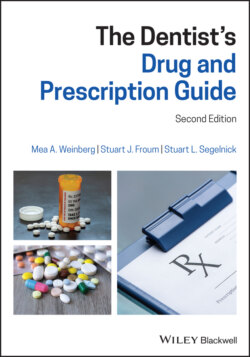Читать книгу The Dentist's Drug and Prescription Guide - Mea A. Weinberg - Страница 16
References
Оглавление1 Balthasar, J. (1999). Bioequivalence and bioequivalency testing. American Journal of Pharmaceutical Education 63: 194–198.
2 Birkett, D. (2003). Generics – equal or not? Australian Prescriber 26: 85–87.
3 Food and Drug Administration (2008). Approved Drug Products with Therapeutic Equivalence Evaluations. www.fda.gov/drugs/resources‐information‐approved‐drugs/approved‐drug‐ products‐therapeutic‐equivalence‐evaluations‐orange‐book.
4 Food and Drug Administration – Center for Drug Evaluation and Research (CDER) (2001). Statistical Approaches to Establishing Bioequivalence. www.fda.gov/downloads/Drugs/GuidanceComplianceRegulatoryInformation/Guidances/ucm070244.pdf.
5 Greene, W.L., Concato, J., and Feinstein, A.R. (2001). Claims of equivalence in medical research: are they supported by the evidence. Annals of Internal Medicine 132: 715–722.
6 Meridith, P. (2003). Bioequivalence and other unresolved issues in generic drug substitution. Clinical Therapeutics 25: 2875–2890.
7 Messerli, F.H. and Sichrovsky, T. (2005). Does the pro‐hypertensive effect of cyclooxygenase‐2 inhibitors account for the increased risk in cardiovascular disease? American Journal of Cardiology 96: 872.
8 Posner, J. and Griffin, J.P. (2011). Generic substitution. British Journal of Clinical Pharmacology 72 (5): 731–732.
9 Warner, T.D. and Mitchell, J.A. (2008). COX‐2 selectively alone does not define the cardiovascular risks associated with non‐steroidal anti‐inflammatory drugs. Lancet 371: 270–273.
10 Welage, L.S., Kirking, D.M., Ascione, F.J. et al. (2001). Understanding the scientific issues embedded in the generic drug approval process. Journal of the American Pharmaceutical Association 41: 856–867.
11 White, W.B. (2007). Cardiovascular effects of the cyclooxygenase inhibitors. Hypertension 49: 408–418.
